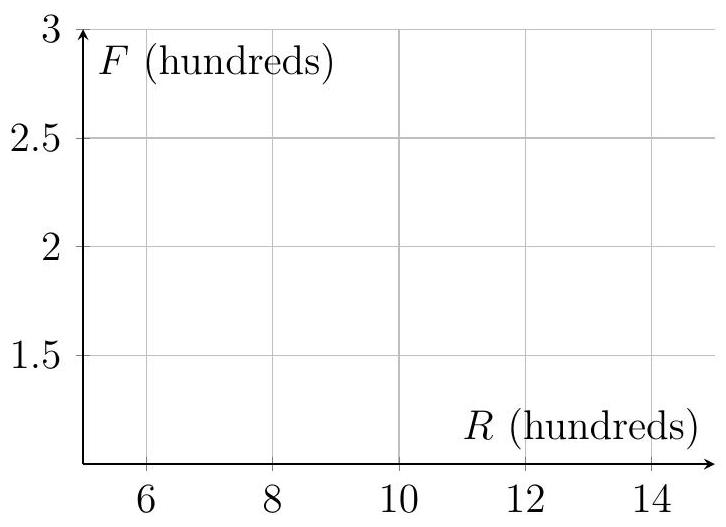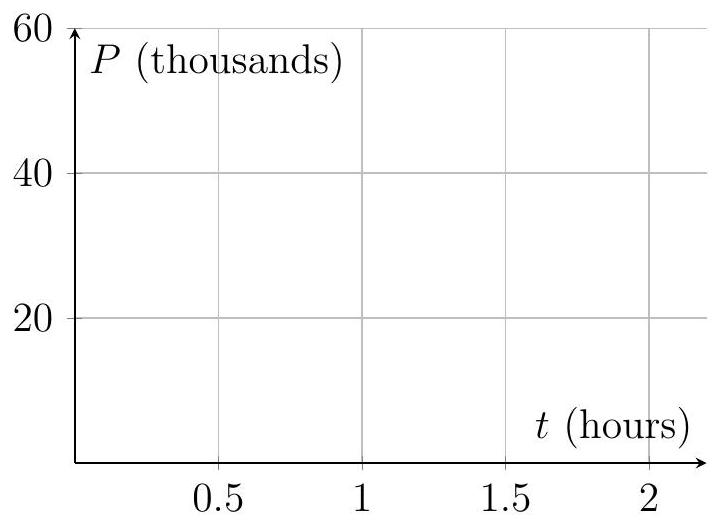Practice AHL 5.16—Eulers method for 1st order DEs with authentic IB Mathematics Applications & Interpretation (AI) exam questions for both SL and HL students. This question bank mirrors Paper 1, 2, 3 structure, covering key topics like core principles, advanced applications, and practical problem-solving. Get instant solutions, detailed explanations, and build exam confidence with questions in the style of IB examiners.
A tank contains a saline solution with concentration (in ) at time (in minutes). Water with salt at flows in at , and the solution flows out at . The tank volume is 100 L . The differential equation is:
Initial concentration:
g/L at .
Solve the differential equation to find .
Use Euler's method with minute to estimate after 2 minutes.
Sketch the solution curve and Euler's approximations for .
Determine the time when using the analytical solution.
A researcher models the concentration of a chemical pollutant (in ) in a lake over time (in months). The rate of change of the concentration is influenced by natural degradation and an external source, modeled by the differential equation:
Initially, at , the concentration is .
Solve the differential equation to find the general solution for in terms of .
Use the initial condition to find the particular solution and determine the concentration after 3 months.
Use Euler's method with a step size of 0.5 months to estimate the concentration after 1 month.
Sketch the solution curve for and the Euler's method approximations for the first two steps on the same graph.
The lake is considered safe for aquatic life when . Using your particular solution, determine if the lake is safe after 10 months.
A predator-prey system models rabbits and foxes (in hundreds) over time (in years):
Initial populations:
at .
Interpret the terms in both differential equations.
Use Euler's method with
years to estimate
and
after 0.2 years.
Find the non-zero equilibrium point.
Sketch the phase portrait trajectory for

Consider the curve defined by , where . The slope of the curve is given by the differential equation derived from implicit differentiation.
(d) Use implicit differentiation to show that .
(b) At the point , use Euler's method with a step size of 0.1 to estimate when . [3]
(c) Verify that lies on the curve. [1]
(d) Sketch the curve and the Euler's method approximation near for . [3]

Use implicit differentiation to show that
At the point , use Euler's method with a step size of 0.1 to estimate when .
Verify that lies on the curve.
Sketch the curve and the Euler's method approximation near for .
A model describes the growth of a coral reef's surface area (in ) over time (in years), given by:
At .
Explain why the reef's surface area is limited to .
Use Euler's method with a step size of 0.2 years to estimate after 0.4 years.
Solve the differential equation to find .
Sketch the solution curve for , indicating the Euler's method points and the limiting value.
Find the actual value of at and compare it with the Euler's method estimate.
A model describes the decay of a radioactive isotope with activity (in becquerels) over time (in days), given by:
At .
Solve the differential equation to find the general solution for .
Use the initial condition to find the particular solution and calculate after 5 days.
Use Euler's method with a step size of 0.5 days to estimate after 1 day.
Sketch the solution curve for and the Euler's method approximations for the first two steps.
Explain, with a reason, whether the Euler's method estimate in part 3 is an over or under-approximation compared to the actual value.
A model describes the spread of a new technology adoption (in thousands of users) over time (in months):
At .
Explain why the maximum number of adopters is 50,000.
Use Euler's method with a step size of 0.2 months to estimate after 0.4 months.
Solve the differential equation to find .
A scientist models the temperature (in ) of a cooling reactor core over time (in hours), governed by:
At .
Solve the differential equation to find the general solution for .
Use the initial condition to find the particular solution and calculate after 4 hours.
Use Euler's method with a step size of 1 hour to estimate after 2 hours.
Sketch the solution curve for and the Euler's method approximations for the first two steps on the same graph.
Determine the time when using the particular solution.
A researcher models the concentration of a chemical pollutant (in ) in a lake over time (in months). The rate of change of the concentration is influenced by natural degradation and an external source, modeled by the differential equation:
Initially, at , the concentration is .
Solve the differential equation to find the general solution for in terms of .
Use the initial condition to find the particular solution and determine the concentration after 3 months.
Use Euler's method with a step size of 0.5 months to estimate the concentration after 1 month.
Sketch the solution curve for and the Euler's method approximations for the first two steps on the same graph.
The lake is considered safe for aquatic life when . Using your particular solution, determine if the lake is safe after 10 months.
A biologist studies the growth of a bacterial colony, where (in thousands) represents the population at time (in hours). The growth is modeled by:
At .
Explain why the population has a carrying capacity of 50,000 bacteria.
Use Euler's method with a step size of 0.2 hours to estimate after 1 hour.
Find the equilibrium points by setting .
Sketch the direction field for the differential equation for , and indicate the behavior near the equilibrium points.
